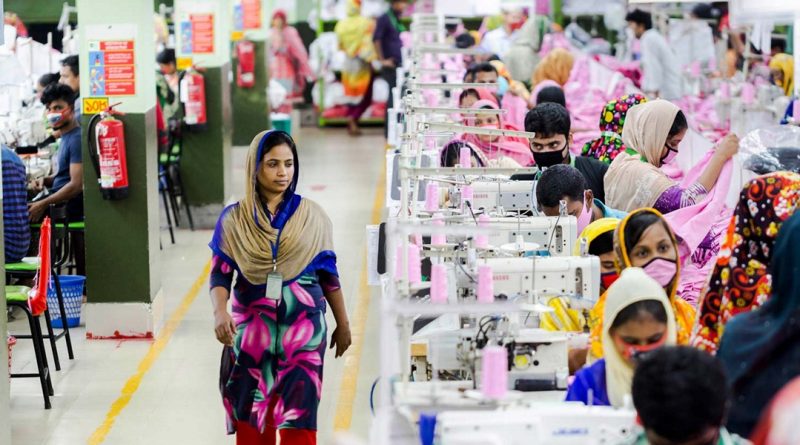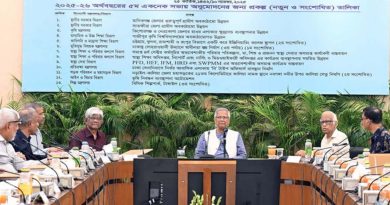Dhaka, July 27, 2025 — Bangladeshi apparel exporters are experiencing mounting pricing pressure from European Union (EU) buyers as uncertainty looms over a steep increase in US tariffs set to take effect on August 1, industry insiders have warned.
Facing delays or suspensions in orders from the United States, Bangladesh’s largest single export market, many manufacturers are turning to the EU to fill their order books. However, this strategic pivot is also exposing them to intensified pricing challenges from European buyers who are leveraging the situation to negotiate lower rates.
“The share of orders from the US has dropped to around 50 per cent. To bridge this gap, exporters are actively seeking business from the EU,” said S.M. Majedur Rahim, Director of Giant Group. “But even when US buyers are placing orders, they are offering smaller volumes and pushing for price cuts, citing tariff uncertainties. Expecting exporters to absorb the impact of these tariffs is unjust.”
According to the Bangladesh Garment Manufacturers and Exporters Association (BGMEA), a proposed 35 per cent reciprocal tariff on Bangladeshi exports to the US would push the effective tariff rate to over 50 per cent—up from the current average of 15.5 per cent—making Bangladeshi products significantly more expensive in the US market.
European buyers—many of whom also source for the US—are already cutting back on order volumes. Major retailers such as H&M and Inditex have reportedly reduced procurement from Bangladesh by 10 to 20 per cent, reflecting concerns over the impending tariff hike and its global ripple effects.
“Increased uncertainty over US-bound trade is prompting EU buyers to renegotiate terms. Some are reducing prices citing inflation and tariff-related cost concerns,” Rahim said.
Exporters Losing Business to Price Cuts
Fazlee Shamim Ehsan, CEO of Fatullah Apparels, recounted a recent experience where a long-time Dutch buyer reduced its per-unit offer by $0.25–0.30 on a $750,000 order. “I couldn’t accept that price. Losing this order has affected factory operations,” he said.
With the US being the single-largest market for Bangladeshi garments, exporters warn that the tariff hike’s impact will not remain confined. “Buyers often source for multiple markets from a single country. When US-bound orders are affected, it impacts other markets too,” said Shovon Islam, Managing Director of Sparrow Group.
An EU-based apparel brand’s country manager echoed similar concerns. Speaking on condition of anonymity, he said that while the US accounts for less than 10 per cent of his company’s global sales, increased tariffs could force a shift in sourcing away from Bangladesh. “If this issue is not resolved, our business viability here will come into question,” he said, noting that developing a new supplier takes at least three years.
The head of business development at multinational buying house PDS Group added that EU customers are now increasingly asking for price reductions on new orders. “EU buyers are aware of the production capacity and global market pressures on Bangladesh, and they’re using it to drive prices down,” the official said.
Sector Faces Broader Challenges
Data from the National Board of Revenue (NBR) show that 2,377 Bangladeshi firms exported to the US in FY2024–25, with 801 of them relying on the US market for more than half of their total export earnings. Collectively, these firms exported $6.62 billion worth of goods, including $5.05 billion to the US alone.
Aside from apparel, Bangladesh’s total annual exports to the US—covering leather, plastics, and agro-products—hover around $10 billion. The threatened tariff hike therefore carries far-reaching implications.
In addition to EU pricing pressure, exporters also report falling orders from non-traditional markets like India and South Korea. Officials cite non-tariff barriers in India and economic instability in South Korea as contributing factors.
Tariff Hike Could Undermine Competitiveness
BGMEA President Mahmud Hasan Khan Babu warned that an additional 35 per cent tariff would severely damage the competitiveness of Bangladesh’s apparel industry. “If we face higher tariffs than Vietnam, India, or Pakistan, we risk losing substantial market share,” he said.
He added that absorbing the tariff through discounts is not a viable option for most exporters. “Offering a 35 per cent price cut would not be sustainable.”
With increased competition from lower-tariff countries, stakeholders fear job losses and social unrest in a sector that employs millions and serves as the backbone of the national economy.
As negotiations continue behind closed doors, exporters and trade leaders are calling on the government to urgently engage with Washington to avert the tariff escalation and safeguard Bangladesh’s trade interests.






